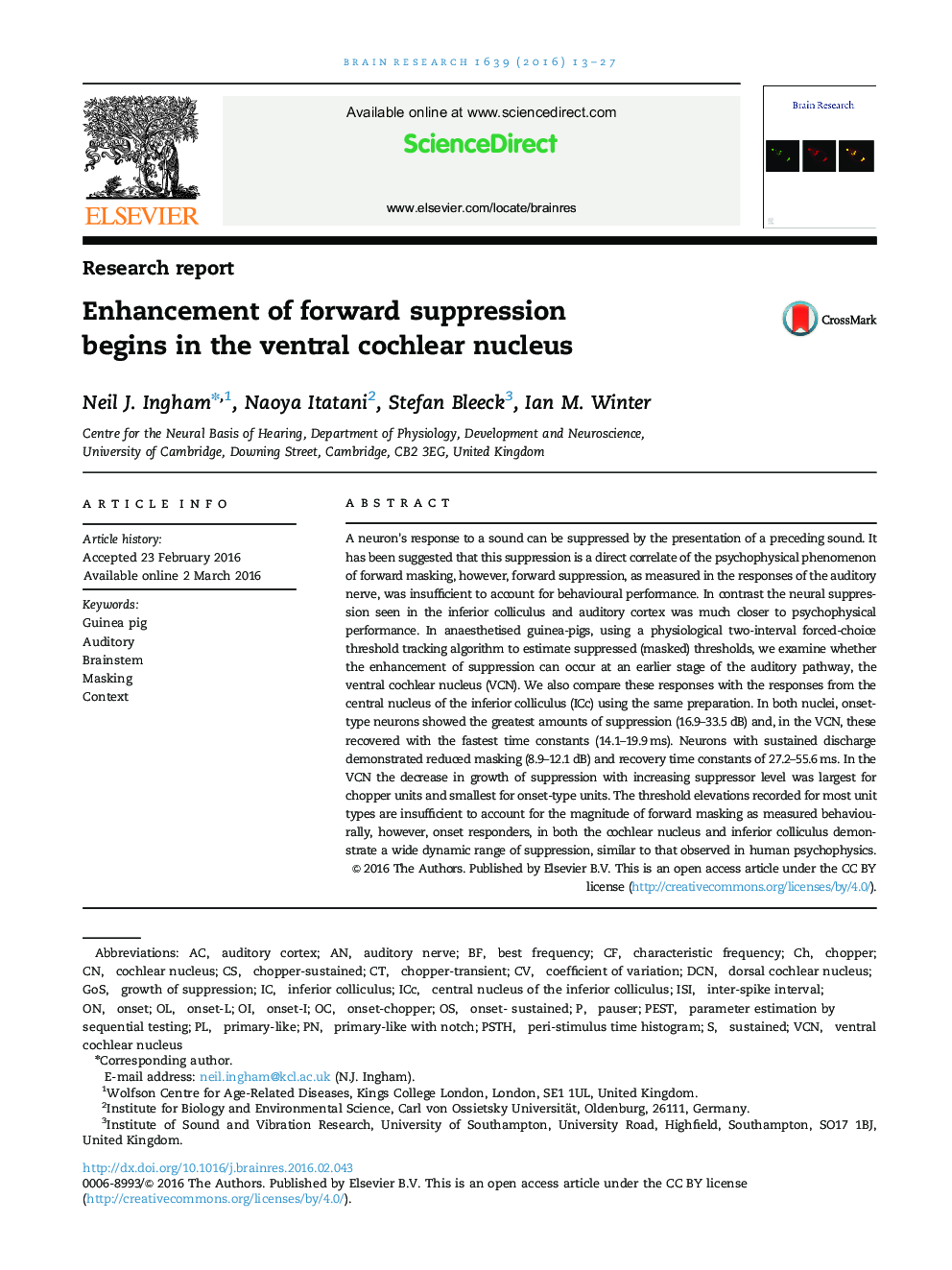| Article ID | Journal | Published Year | Pages | File Type |
|---|---|---|---|---|
| 6262572 | Brain Research | 2016 | 15 Pages |
â¢A two-interval forced choice procedure was used to measure suppressed thresholds.â¢The time course of recovery from suppression was fastest for onset units.â¢Growth of suppression with increased suppressor level was greatest for onset units.â¢Suppression in onset units was greater than that seen in auditory nerve fibres.
A neuron׳s response to a sound can be suppressed by the presentation of a preceding sound. It has been suggested that this suppression is a direct correlate of the psychophysical phenomenon of forward masking, however, forward suppression, as measured in the responses of the auditory nerve, was insufficient to account for behavioural performance. In contrast the neural suppression seen in the inferior colliculus and auditory cortex was much closer to psychophysical performance. In anaesthetised guinea-pigs, using a physiological two-interval forced-choice threshold tracking algorithm to estimate suppressed (masked) thresholds, we examine whether the enhancement of suppression can occur at an earlier stage of the auditory pathway, the ventral cochlear nucleus (VCN). We also compare these responses with the responses from the central nucleus of the inferior colliculus (ICc) using the same preparation. In both nuclei, onset-type neurons showed the greatest amounts of suppression (16.9-33.5 dB) and, in the VCN, these recovered with the fastest time constants (14.1-19.9 ms). Neurons with sustained discharge demonstrated reduced masking (8.9-12.1 dB) and recovery time constants of 27.2-55.6 ms. In the VCN the decrease in growth of suppression with increasing suppressor level was largest for chopper units and smallest for onset-type units. The threshold elevations recorded for most unit types are insufficient to account for the magnitude of forward masking as measured behaviourally, however, onset responders, in both the cochlear nucleus and inferior colliculus demonstrate a wide dynamic range of suppression, similar to that observed in human psychophysics.
